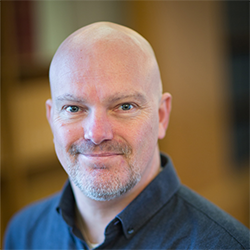CASE STUDIES
The Milner Consortium provides a unique opportunity to combine expertise with therapeutic knowledge from the pharmaceutical industry.
NEUROSCIENCE: Autophagy targets in neurodegeneration
Autophagy is a major protein and organelle recycling and degradation pathway and is increasingly being targeted as a therapeutic strategy in neurodegeneration. But the development of clinically viable modulators of autophagy requires better understanding of target relevance across mechanistic and disease models. This project aims to tackle this, drawing on the combined experience of an academic-industry team to assess a number of targets in complementary compound and genetic screening assays and neuronal disease models, to uncover robust targets for prioritization. Arising from an industry-led workshop that brought together key academic and industry opinion leaders within the Milner Therapeutics Consortium, this project includes academic teams from three institutes across Cambridge – John Skidmore’s team at the ALBORADA Drug Discovery Institute, Nicholas Ktistakis’s group at the Babraham Institute and Alex Whitworth’s group at the MRC Mitochondrial Biology Unit – each of whom have complementary expertise in autophagy mechanisms and models. Read more here.


SIMON COOK ONCOLOGY: Investigating mechanisms of ERK1/2 inhibition
Simon Cook (Babraham Institute) has collaborated with Astex to investigate the significance of different modes of ERK1/2 inhib-ition in cell lines and the consequences for cancer cell growth inhibition and adaptive resistance. Targeting the ERK1/2 pathway with BRAF or MEK inhibitors in melanoma has been very successful but many cancers do not respond or adapt to current BRAF or MEK inhibitors by reinstating ERK1/2 signalling. This project involved a detailed study of how different ERK inhibitors alter downstream pathway signalling, and revealed that a dual-mechanism inhibitor may provide more prolonged pathway inhibition, with potential implications for ongoing inhibitor development in the clinic.
PUBLICATIONS
Sipthorp J et al. Bioconjugate Chem. (2017)
Kidger A et al. Pharmacol Ther. (2018) (Review)
Kidger et al. Mol. Cancer Therapy (2019)
LUDOVIC VALLIER DISEASE MODELS: Novel therapeutics for liver disease
Non-alcohol fatty liver disease/non-alcoholic steatohepatitis (NAFLD/NASH) are becoming a leading cause of liver disease in developed countries and, in many cases, organ transplantation is the only available treatment. Development of new therapies is currently impaired by the absence of physiologically relevant disease models. To address this limitation, Ludovic Vallier (Wellcome MRC Cambridge Stem Cell Institute) is working with GlaxoSmithKline and Ferring Pharmaceuticals to identify and validate new therapeutic targets in liver disease through CRISPR/Cas9-based genetic screens. Of particular interest, this consortium aims to identify new genes protecting liver cells against toxicity induced by fatty acids. This project will bring together a novel in vitro human model for NAFLD/NASH established in the Vallier group and NASH/NAFLD expertise from the two companies.
This consortium provides a unique opportunity to combine our expertise on disease modelling with the therapeutic knowledge from the pharmaceutical industry. This combination will allow the identification of new target genes for drug development against a major unmet clinical need.

